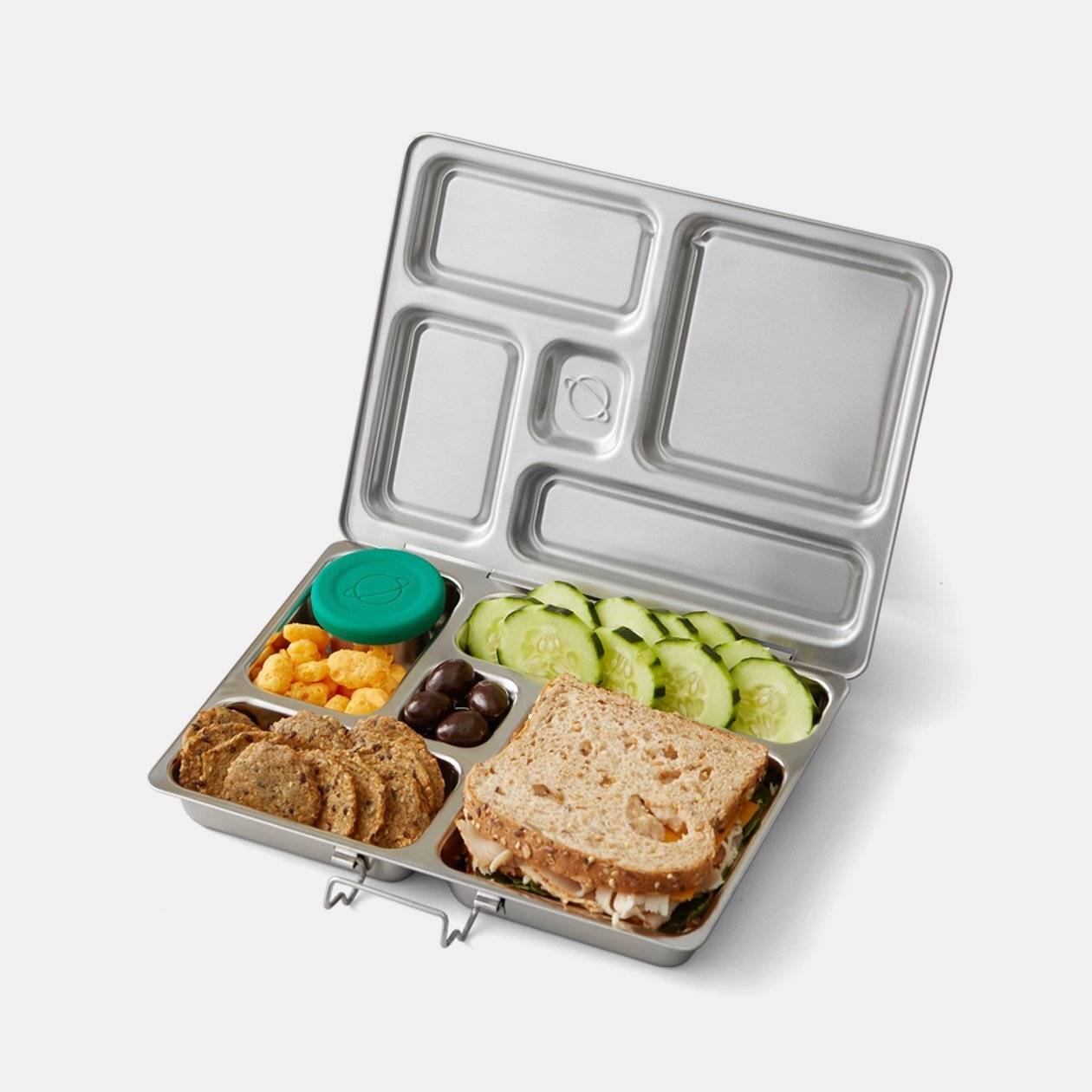5 Steps for Packing a Sustainable Lunch
Stainless steel compartment-style lunch boxes are a great investment! Image Credit: Planet Box
Whether you're back in school or running from meeting to meeting, we all need to pack a lunch at some point. In this post, I outline my top 5 tips for packing a sustainable lunch.
Focus on Seasonal Fruits and Vegetables
Centering your lunch around seasonal fruits and veggies can reduce the greenhouse gas emissions associated with your food. Growing fruits and vegetables is easier on the planet than producing animal products because plants use fertilizers, water and other resources more efficiently than animals.
You don't have to go full vegan, but centering your meal around plants is a great way to start being more sustainable. For a more detailed explanation of this, see my Pros and Cons of a Vegan Diet article.
Making fruits and veggies even more sustainable, you can often grow them yourself or find locally grown options. Buying locally can help you get to know your local food producers and cut back on greenhouse gas emissions from your foods' travels.
Don't overpack perishables
We've all been there: you pack a little too much in your lunch and then forget to refrigerate the leftovers when you get home from work or school. The next morning, those leftovers have to go straight into the trash.
It can be tempting to overpack your lunch because you never know when you'll need a mid-morning snack or have to work overtime, but this can be a very wasteful habit. To avoid food waste, pack extra non-perishable foods (like nuts, seeds, crackers or dehydrated foods) while controlling portions of perishable foods (like meats, dairy and some fruits and vegetables). This way, you'll be able to save your leftovers from day-to-day.
Reuse packaging
Whether you have cloth bags, Bees Wrap or bento-style metal containers, reusable packaging is the way to go. Single-use plastics pollute our land, air and water, and can mess with our hormones and health as they break down. You can steer clear of this sustainability nightmare by investing in reusable lunch products.
However, you must choose your zero-waste products carefully. Many companies falsely market flimsy reusable products made of harmful materials as sustainable. Low-quality plastic or silicone products could be as harmful as single-use plastics and might be damaged after just a few uses.
Instead of falling for these traps, stick with tried and tested products and materials. Some of my favorite materials include Bees Wrap, stainless steel and cotton. These materials can stand the test of time and aren't as heavily polluting as plastics.
Go cutlery free or use reusable cutlery
Disposable cutlery is another major sustainability no-no. Instead of grabbing single-use cutlery, pack metal forks and spoons from home. Some companies will try to convince you that you need fancy bamboo cutlery sets for eating on the go, but I find these products to be too bulky and simply unnecessary.
Other companies may try to sell you biodegradable cutlery, but these are often as polluting as their plastic counterparts. Like I mentioned above, we should try to avoid buying gimmicky zero-waste products from large companies. Instead, just grab a fork from your drawer at home.
Stick to reusable bottles, glass bottles or aluminum cans
We all know that plastic waste is terrible for us and the world around us, and water bottles are a very popular single-use plastic product. Investing in a high-quality reusable bottle can help you reduce your role in plastic pollution. If you want more than water to quench your thirst, buy drinks in glass bottles or aluminum cans. These materials are much more easily recyclable than plastic.

